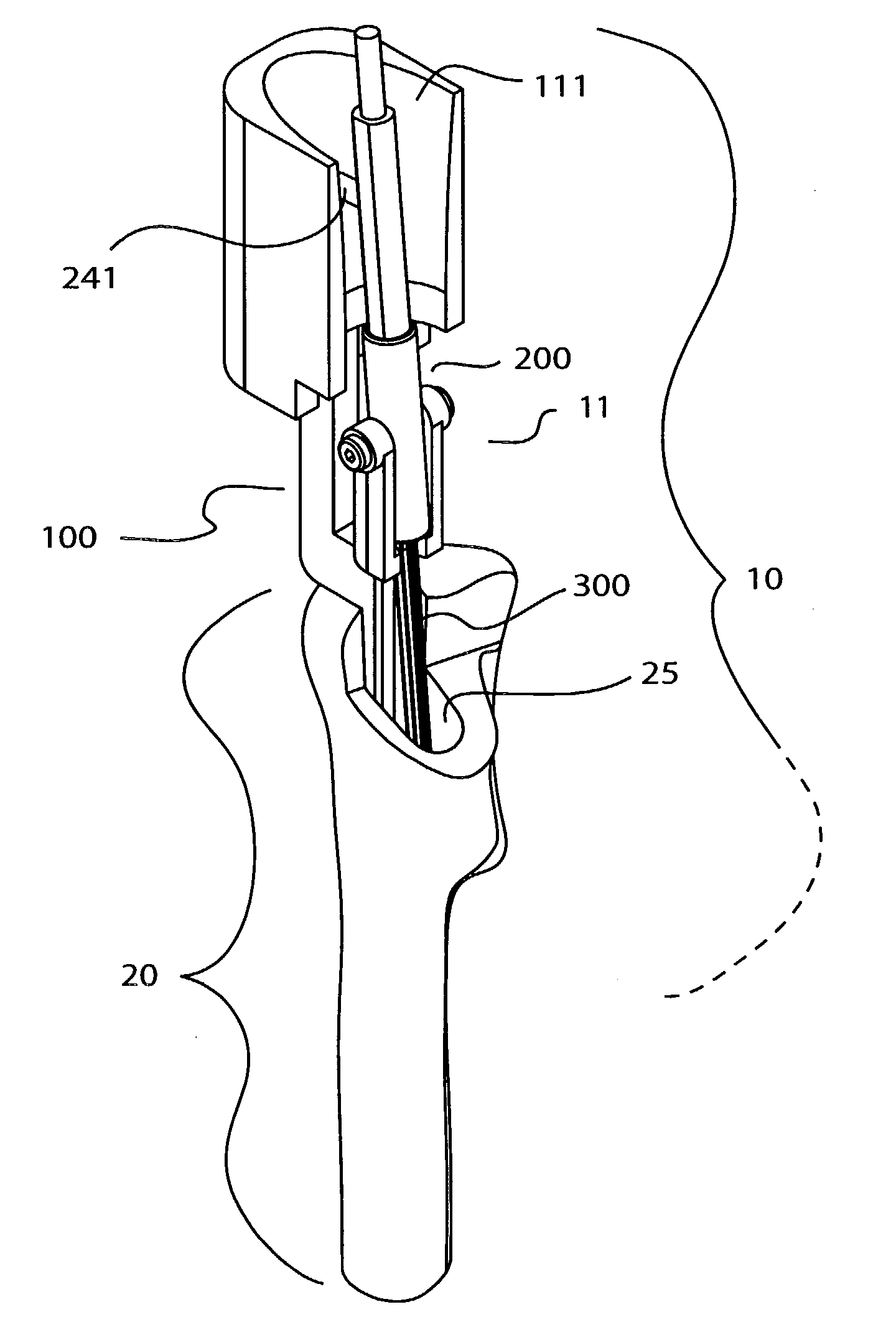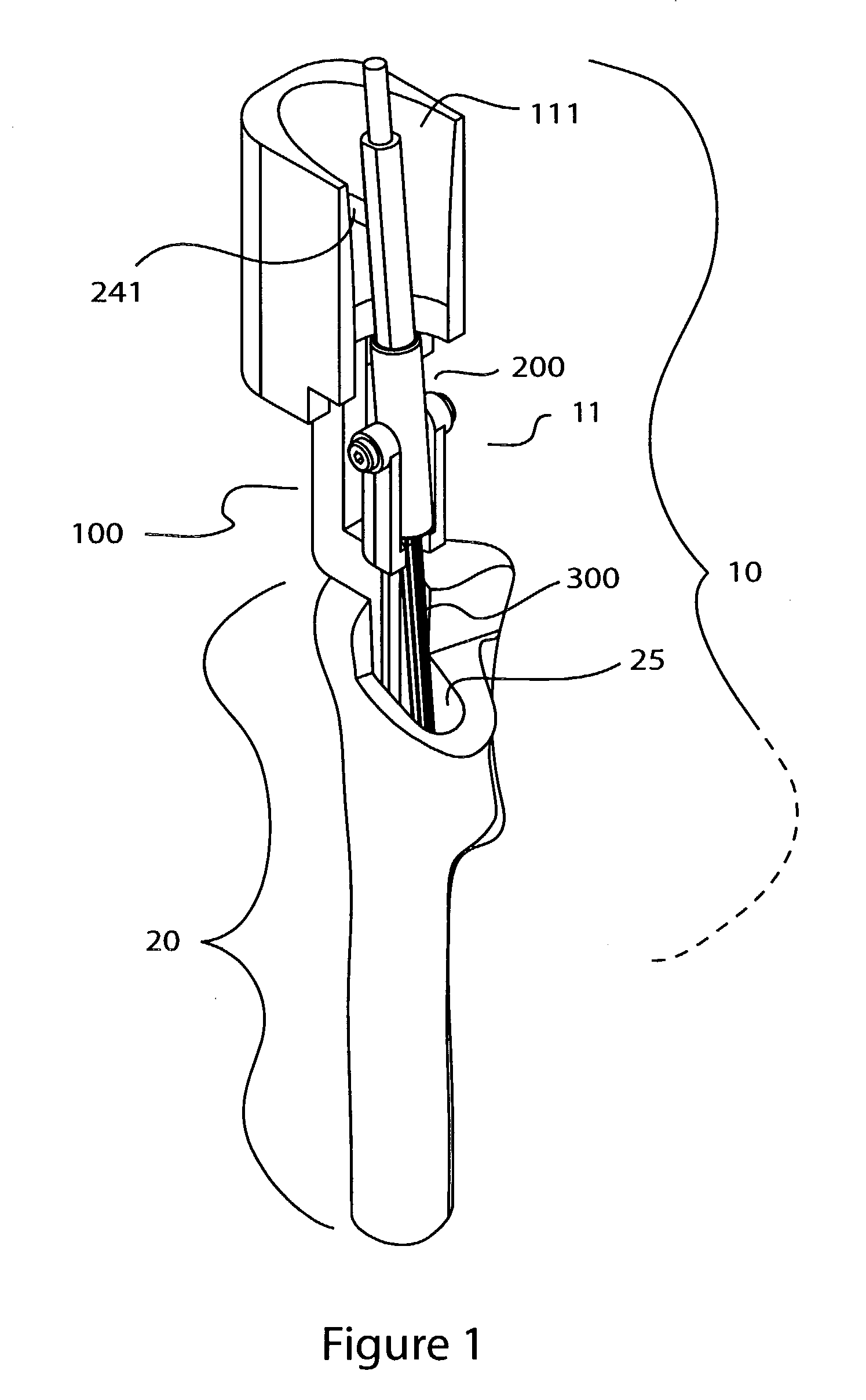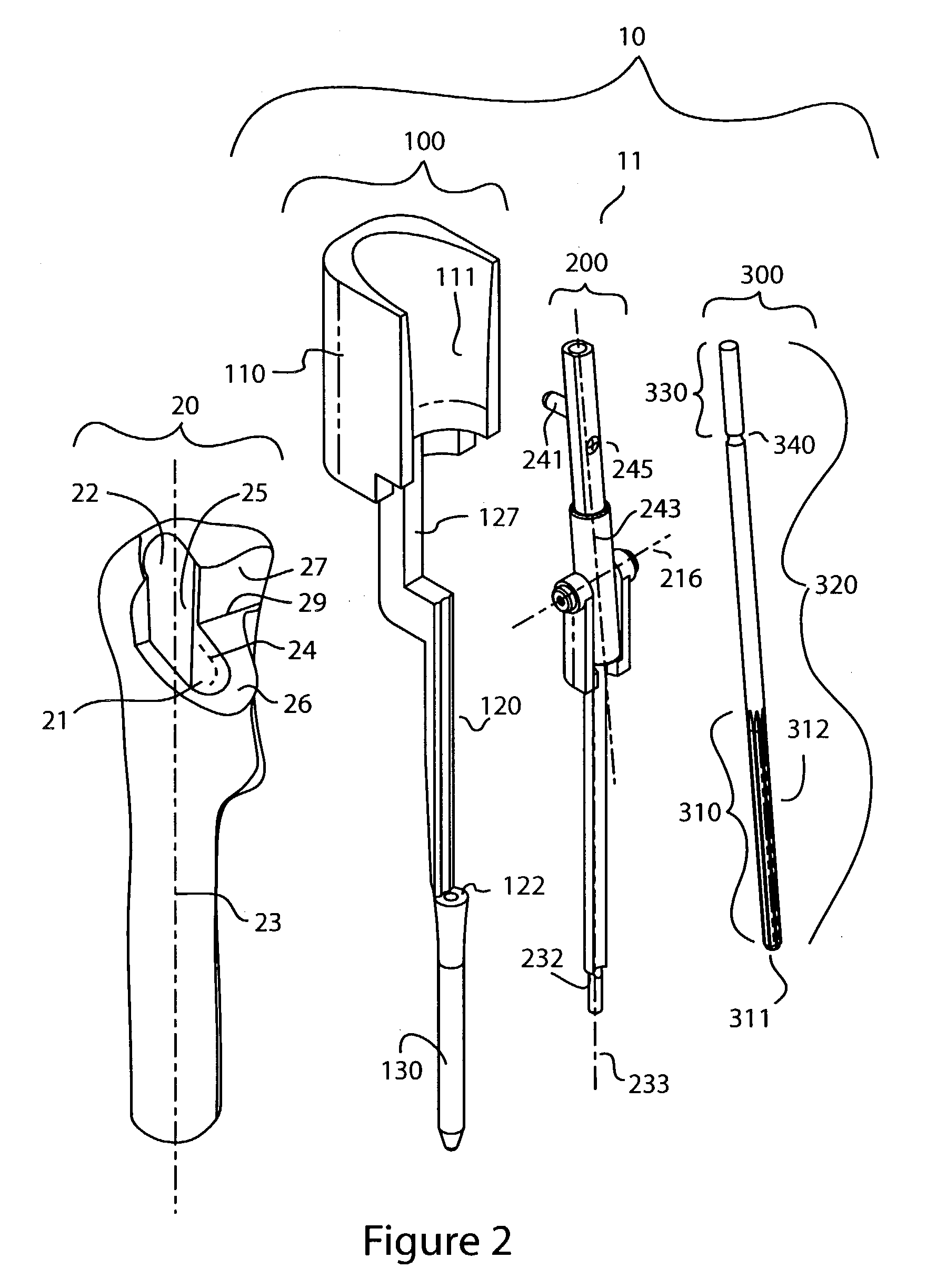Surgical milling instrument for shaping a bone cavity
- Summary
- Abstract
- Description
- Claims
- Application Information
AI Technical Summary
Benefits of technology
Problems solved by technology
Method used
Image
Examples
first embodiment
[0046]Looking first at FIG. 1, a milling instrument assembly 10 for shaping a bone cavity 25 in a proximal femur 20 is shown. In FIG. 1, the milling instrument assembly 10 is positioned to prepare the cavity 25 in the proximal femur 20. The milling instrument assembly 10 comprises three major subassemblies that are shown in greater detail in FIG. 2. These subassemblies are: a guide body 100, a mill guide 200, and a tissue cutting mill 300.
[0047]In FIG. 2, these three subassemblies are shown before assembly and before insertion into the proximal femur 20. As shown in FIG. 2, prior to insertion of the milling instrument assembly 10, some of the tissue is removed from the proximal femur 20 to allow for insertion of the milling instrument assembly 10. During a THA procedure, a surgeon typically removes the diseased femoral head tissue by cutting transverse 26 and longitudinal 27 osteotomy cuts in the bone that intercept along an osteotomy edge 29. The surgeon also drills a bore 22 dista...
second embodiment
[0075]the milling instrument assembly 15 of FIGS. 6, 7, 8 works in conjunction with the circular mill guide 500 shown in FIG. 7. The mill guide 500 essentially works as a universal joint between mill 300 and guide body 100. When a non-axial force is applied to the mill 300, this force is constrained by the circular mill guide 500 to an orientation that is both pivoting along the pivot guide axis 216 and rotating along the mill guide axis 243.
[0076]A handle 590 is shown in FIG. 6 that can be rigidly attached to the follower 240 of either of the above described mill guide 200 or the circular mill guide 500. This handle 590 is generally comprised of a guidance section 293 that facilitates the gripping and guidance by the hand of a surgeon (not shown) and a connection portion 594 that mounts to the follower 240. The guidance section 293 has a grip portion 591 positioned along the longitudinal shaft of the guidance section 293. This grip portion 591 is used for gripping or making contact...
fourth embodiment
[0083]In the milling instrument assembly 13 shown in FIG. 13 and FIG. 14, the template section 1110 is axially adjustable with respect to the tongue 1171 and groove 1160 sliding axis by a thumb screw 1170. The thumb screw 1170 is allowed to rotate along its axis, but is axially captured in translation in the tongue 1171. The male helical threads 1174 on this thumb screw 1170 mate with truncated female helical threads 1170 in the groove 1160. The template section 1110 is thus adjusted axially by rotating the thumb screw 1174.
[0084]Other types of adjustable connections in which the longitudinal position of the template section 1110 is adjusted with respect to the guide body frame 1120 can be used. These adjustable connections include those commonly used in mechanical fastening, such as cam locks, rack and pinion connections and meshing gear mechanism connections.
PUM
 Login to View More
Login to View More Abstract
Description
Claims
Application Information
 Login to View More
Login to View More - R&D
- Intellectual Property
- Life Sciences
- Materials
- Tech Scout
- Unparalleled Data Quality
- Higher Quality Content
- 60% Fewer Hallucinations
Browse by: Latest US Patents, China's latest patents, Technical Efficacy Thesaurus, Application Domain, Technology Topic, Popular Technical Reports.
© 2025 PatSnap. All rights reserved.Legal|Privacy policy|Modern Slavery Act Transparency Statement|Sitemap|About US| Contact US: help@patsnap.com



